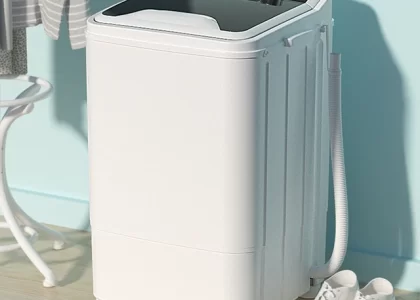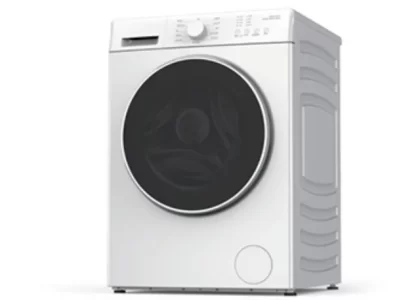 Introduction:
Introduction:
Cleaning your front load washing machine is essential for maintaining its performance and preventing unpleasant odors. Over time, residue, bacteria, and mold can accumulate in the drum, detergent dispenser, and rubber gasket of the machine. Regular cleaning not only helps eliminate these issues but also ensures that your laundry comes out fresh and clean.
Gather the Necessary Supplies:
Vinegar: White vinegar is an effective natural cleaner that helps remove residue, bacteria, and odors.
Baking Soda: Baking soda helps neutralize odors and acts as a gentle abrasive for cleaning.
Microfiber Cloth: Microfiber cloths are ideal for cleaning surfaces without leaving lint behind.
Q-Tips or Small Brush: These tools are useful for reaching and cleaning tight spaces, such as the detergent dispenser and rubber gasket.
Hot Water: Hot water enhances the cleaning power of cleaners and helps loosen dirt and grime.
Cleaning the Drum:
Wipe Down the Drum:
Use a damp microfiber cloth to wipe down the interior of the drum, removing any visible residue or lint.
Run a Cleaning Cycle:
Set your washing machine to the highest water level and hottest water temperature. Add two cups of white vinegar to the detergent dispenser or directly into the drum. Run a complete cycle without any laundry.
Cleaning the Detergent Dispenser:
Remove the Dispenser: Depending on your washing machine model, the detergent dispenser may be removable or have a separate compartment for cleaning.
Soak in Vinegar Solution: Remove the detergent dispenser and soak it in a mixture of equal parts water and white vinegar for about 30 minutes.
Scrub and Rinse: Use a small brush or toothbrush to scrub the dispenser, removing any residue or buildup. Rinse thoroughly with water and dry before reinserting it into the washing machine.
Cleaning the Rubber Gasket:
Inspect the Gasket: The rubber gasket, also known as the door seal, can collect residue, mold, and mildew. Inspect it for any visible signs of dirt, stains, or mold growth.
Wipe Down the Gasket: Use a damp microfiber cloth soaked in a vinegar and water solution to wipe down the gasket, paying special attention to the folds and crevices where mold can accumulate.
Remove Mold or Mildew: If you notice mold or mildew, mix baking soda with water to form a paste. Apply the paste to the affected areas and let it sit for at least 15 minutes. Scrub the gasket with a brush or toothbrush to remove the mold, then rinse with water and wipe dry.
Cleaning the Filter:
Locate the Filter: Front load washing machines often have a filter or trap that collects lint, debris, and small objects. Refer to your machine’s manual to locate the filter.
Remove and Clean the Filter: Follow the manufacturer’s instructions to remove the filter. Rinse it under running water to remove any debris or residue. If necessary, use a small brush or toothbrush to scrub away stubborn buildup. Once cleaned, reinsert the filter according to the manufacturer’s instructions.
Regular Maintenance and Prevention:
Keep the Door Open:
After each use, leave the door of the washing machine open to allow air circulation and prevent moisture buildup.
Wipe Down the Gasket:
Regularly wipe down the rubber gasket with a damp cloth to remove any residue or moisture.
Run Monthly Cleaning Cycles:
To prevent odors and maintain a clean drum, run a cleaning cycle using hot water, vinegar, and baking soda once a month.
 Conclusion:
Conclusion:
Regularly cleaning your front load washing machine is crucial for maintaining its performance and preventing unpleasant odors. By following the steps outlined in this comprehensive guide, you can keep your machine spotless and odor-free.In addition, other home appliances such as neck fans also need to be cleaned regularly, so don’t forget them.
From cleaning the drum to tackling the detergent dispenser and rubber gasket, each step plays an important role in maintaining a clean and efficient washing machine. Incorporate regular maintenance and prevention techniques to ensure your front load washing machine continues to provide fresh and clean laundry for years to come.




